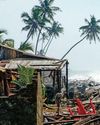
Achondroplasia, the most common type of dwarfism, affects one in every 25,000-30,000 people.
We’ve been used to seeing Paralympian Ellie Simmonds swimming for Team GB. But in a new BBC1 documentary, Ellie dips her toes into the world of a drug designed to treat symptoms of achondroplasia, the most common form of dwarfism.
The documentary, Ellie Simmonds: A World Without Dwarfism?, focuses on vosoritide, a medicine aimed at changing the lives of people living with dwarfism by helping children to grow. The drug, which requires daily injections and is currently undergoing clinical trials in the UK, has been hailed a breakthrough by some families, but it’s also been met with resistance.
Proposed treatments for conditions like achondroplasia, along with screening for other genetic conditions such as Down’s syndrome, raise questions about how we view people with disabilities, and how they’re expected to adapt to the world they live in. A woman looks into what a new drug could mean and whether it really is the answer.
Ellie’s documentary is available to watch now on BBC iPlayer.
'I DON'T WANT MEDICINE TO MAKE ME TALLER'
Cathy Reay is a 35-year-old writer with a focus on disability justice.
Sometimes, when people have a disability, that’s all anyone can see. But growing up ‘different’ I was always encouraged to embrace my disabled body and be proud of my whole identity. I have achondroplasia – the type of dwarfism people have probably seen on TV, at the Paralympics, or maybe, less favorably, in pantomime.
Bu hikaye WOMAN - UK dergisinin May 02, 2022 sayısından alınmıştır.
Start your 7-day Magzter GOLD free trial to access thousands of curated premium stories, and 9,000+ magazines and newspapers.
Already a subscriber ? Giriş Yap
Bu hikaye WOMAN - UK dergisinin May 02, 2022 sayısından alınmıştır.
Start your 7-day Magzter GOLD free trial to access thousands of curated premium stories, and 9,000+ magazines and newspapers.
Already a subscriber? Giriş Yap

View from THE BACK
Isabel Webster says what you're thinking

Time to get ON BOARD!
A no-fly cruise from the UK offers a hassle-free holiday to remember

Matt Tebbutt's FESTIVE FAVOURITES
The Saturday Kitchen star serves up easy, seasonal winners

I'm the child OF AN AFFAIR
Jennifer Barton still feels like a dirty secret at 42

One final PARTY
Caitriona Adams' fun-loving little boy was brave until the end

How to be alone NOT LONELY
Connecting to others has never been more important for your health

15 ways to BOOST YOUR ENERGY over Christmas
Survive the last of the festivities and jingle your energy bells with help from our experts

TSUNAMI 20 years on
What is it like to be caught up in a devastating natural disaster? We speak to a survivor

TRUMP VS HARRY
Prince Harry faces a troublesome Christmas as he waits to see what President-elect Trump may do about his visa situation.

'Furious' Meghan's NEW ATTACK
Royal biographer Duncan Larcombe on the claims that things are worse than ever between the sisters-in-law